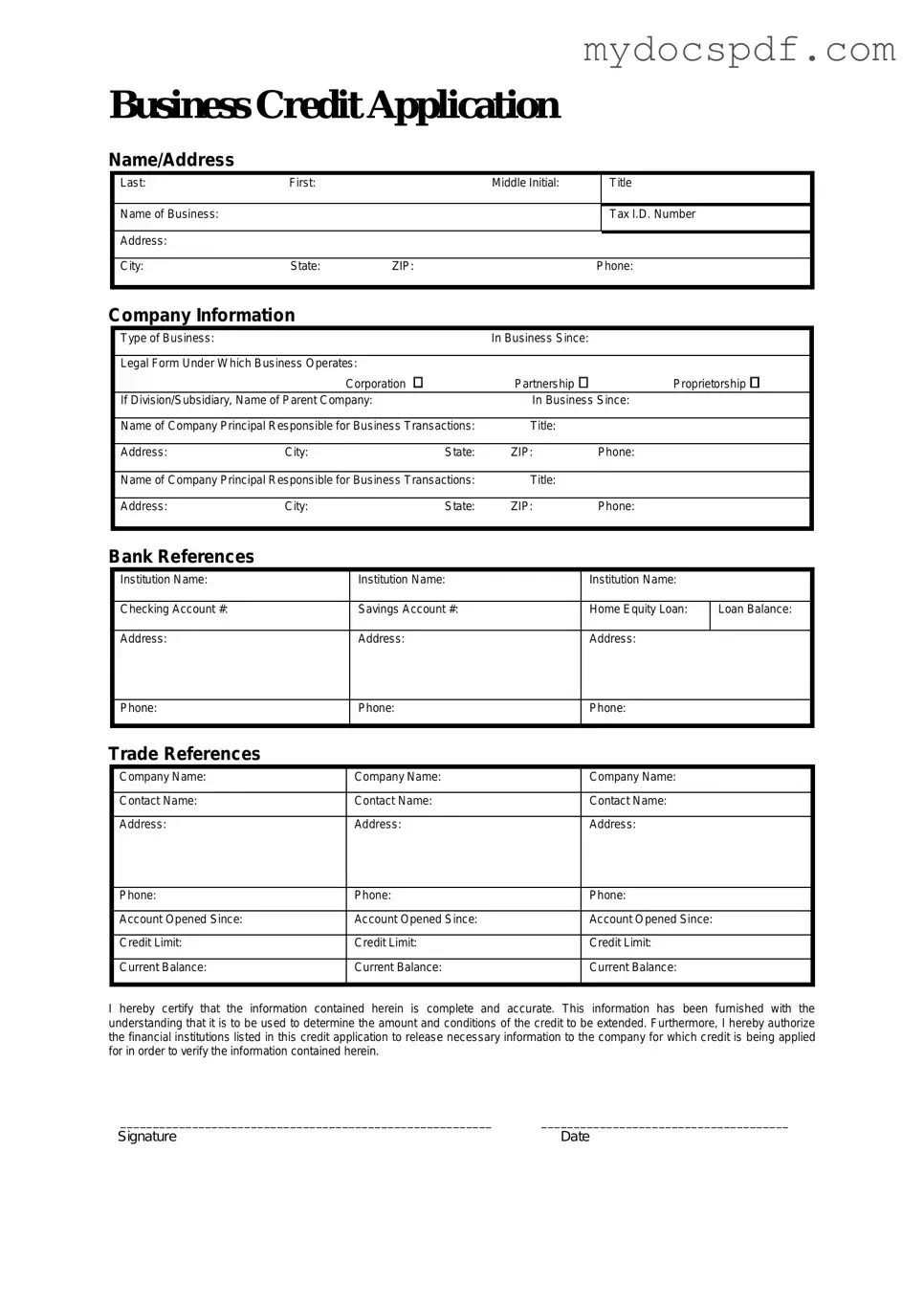The Business Credit Application form serves as a crucial tool for businesses seeking to establish credit with suppliers and financial institutions. This form typically requires essential information about the business, including its legal name, address, and type of ownership. Applicants must provide details about their financial history, such as annual revenue, existing debts, and credit references. The form often includes sections for personal guarantees from business owners, ensuring that lenders have recourse in the event of default. Additionally, businesses may need to disclose their tax identification number and relevant licenses or permits. By completing this application, companies not only demonstrate their creditworthiness but also facilitate the decision-making process for lenders. Accurate and thorough completion of the form can significantly impact the approval of credit, making it a vital step in managing a business's financial relationships.

